How Nootropics Can Boost Emotional Control
🌪️ Introduction: The Modern Challenge of Emotional Regulation
It’s easy to lose your cool these days.
Deadlines pile up. Relationships strain. Social media amplifies everything.
Emotional volatility — frustration, anxiety, impulsivity — has become a normal byproduct of modern life. But when your emotional responses run wild, focus, productivity, and even relationships suffer.
That’s where nootropics come in — compounds that enhance brain function, not just for memory or focus, but for emotional regulation.
New research suggests that certain nootropics and adaptogens can help stabilize mood, reduce over-reactivity, and support neurotransmitter balance, allowing you to feel emotions without being ruled by them.
This article explores how emotional control works in the brain — and how you can use nootropics strategically to strengthen it.
Looking for supplements for This? Click here.
🧬 Part 1: The Neuroscience of Emotional Control

Before diving into the stack, let’s understand the system we’re trying to optimize.
💡 The Prefrontal Cortex: The “CEO” of Emotional Regulation
The prefrontal cortex (PFC) — located behind your forehead — acts as the executive center of your brain.
It helps you:
Assess situations rationally
Delay impulses
Choose long-term goals over short-term reactions
When functioning well, it keeps the amygdala (the brain’s emotional alarm system) in check.
But under stress, fatigue, or anxiety, the PFC loses control.
Cortisol floods your system, reducing blood flow to rational areas and amplifying limbic reactivity — leading to emotional hijacking.
🔥 The Stress–Emotion Feedback Loop
When you react emotionally, the body releases stress hormones (cortisol, adrenaline).
This creates a loop:
1️⃣ Stress triggers emotion
2️⃣ Emotion increases stress hormones
3️⃣ Stress hormones impair rational thought
Breaking that loop requires strengthening neurotransmitter balance and neuronal resilience — both of which nootropics can help with.
🧘 Neurochemistry of Calm
Emotional control depends on several key neurotransmitters:
| Neurotransmitter | Function | Deficiency Symptoms |
|---|---|---|
| GABA | Calms neuronal activity | Anxiety, tension |
| Serotonin | Mood stability | Irritability, aggression |
| Dopamine | Motivation and control | Impulsivity, apathy |
| Acetylcholine | Focus and memory | Distraction, poor decisions |
The goal isn’t sedation — it’s emotional balance: alert yet composed.
That’s where nootropics excel — by gently modulating neurotransmitters without creating dependency.
🌿 Part 2: Nootropics That Enhance Emotional Regulation
Here are the best-researched natural compounds and synthetic nootropics known to improve calm focus, resilience, and emotional control.
🧘 1️⃣ L-Theanine — The Calm Focus Molecule
Derived from green tea, L-theanine increases alpha brain waves, producing a relaxed but alert state.
Mechanism:
Boosts GABA, serotonin, and dopamine
Reduces cortisol
Improves PFC–amygdala communication
Research:
Studies show it lowers physiological stress and heart rate during challenging tasks while improving focus.
💊 Dosage: 200–400 mg/day.
☕ Pro tip: Combine with caffeine for smooth, focused energy — or magnesium for calm emotional clarity.
🌿 2️⃣ Rhodiola Rosea — The Emotional Stabilizer
An adaptogen famous for balancing serotonin and dopamine, Rhodiola reduces stress reactivity and fatigue.
Benefits:
Improves mood resilience
Reduces emotional exhaustion
Enhances motivation without overstimulation
💊 Dosage: 200–400 mg/day (3% rosavins, 1% salidroside).
✅ Best for: Emotional fatigue, apathy, mild anxiety.
🍃 3️⃣ Ashwagandha — The Cortisol Controller
Ashwagandha supports the HPA axis, the system that manages stress hormone output.
By regulating cortisol, it helps prevent emotional overload and irritability.
Mechanism:
Lowers cortisol up to 30%
Enhances GABA receptor function
Improves sleep and recovery
💊 Dosage: 300–600 mg/day (KSM-66® or Sensoril® extract).
✅ Best for: Chronic stress, irritability, or burnout.
🧠 4️⃣ Phosphatidylserine — The Cortisol Buffer
This phospholipid helps regulate cortisol rhythms and support PFC function during acute stress.
Benefits:
Improves stress adaptation
Enhances memory and emotional composure
Reduces cortisol spikes from high-pressure tasks
💊 Dosage: 100–300 mg/day.
✅ Best for: Professionals under cognitive pressure or athletes managing stress.
🌸 5️⃣ Saffron Extract — Mood Lifter and Serotonin Modulator
Saffron (Crocus sativus) is a potent natural serotonin enhancer.
Clinical trials show it improves mood and reduces irritability comparable to some antidepressants.
Mechanism:
Increases serotonin and dopamine in the brain
Decreases inflammation and oxidative stress
Improves emotional flexibility
💊 Dosage: 15–30 mg/day (Affron® extract preferred).
✅ Best for: Emotional low mood, irritability, or PMS-related tension.
🧘 6️⃣ Magnesium (Especially L-Threonate or Glycinate)
Magnesium deficiency heightens stress reactivity and anxiety.
Mechanism:
Activates GABA receptors
Reduces NMDA receptor overstimulation (linked to anxiety)
Improves sleep and recovery
💊 Dosage: 200–400 mg/day.
✅ Best for: People with racing thoughts or nighttime rumination.
🌿 7️⃣ Bacopa Monnieri — The Mind-Calming Memory Herb
Bacopa enhances serotonin transmission and reduces overactive neural firing.
Benefits:
Improves attention under stress
Lowers anxiety and impulsivity
Supports neuroplasticity
💊 Dosage: 300 mg/day (standardized to 50% bacosides).
✅ Best for: Overthinkers and emotionally reactive personalities.
🌙 8️⃣ GABA and Its Precursors (L-Theanine, Taurine, Glycine)
Direct GABA supplements have poor brain penetration, but precursors work beautifully.
Mechanism:
L-Theanine → increases GABA synthesis
Taurine → stabilizes neuron firing
Glycine → calms and supports sleep
💊 Dose range:
Taurine: 500–1000 mg/day
Glycine: 3 g before bed
✅ Best for: Calming overactivation and improving sleep–emotion cycles.
🧬 9️⃣ Omega-3 Fatty Acids — Emotional Flexibility Enhancer
Omega-3s (EPA + DHA) improve neural membrane fluidity, helping the PFC regulate emotions efficiently.
Research:
Studies link higher EPA intake to lower aggression and impulsivity.
💊 Dosage: 1–2 g EPA+DHA/day.
✅ Best for: Long-term emotional stability, mood balance.
🧠 10️⃣ N-Acetyl Cysteine (NAC) — The Impulse Regulator
NAC restores glutamate homeostasis, reducing compulsive thinking and emotional volatility.
Benefits:
Calms overactive brain regions
Reduces irritability and intrusive thoughts
Supports detox and antioxidant defense
💊 Dosage: 600–1200 mg/day.
✅ Best for: Rumination, anger management, or addictive tendencies.
Looking for supplements for This? Click here.
⚗️ Part 3: Stacking Nootropics for Emotional Control
Let’s build stacks that work synergistically — targeting multiple emotional pathways simultaneously.
💆 1️⃣ The Calm Resilience Stack
Goal: Handle stress calmly without sedation.
| Ingredient | Function |
|---|---|
| L-Theanine (200 mg) | Increases alpha waves |
| Magnesium Glycinate (200 mg) | Calms nervous system |
| Ashwagandha (300 mg) | Reduces cortisol |
| Saffron (15 mg) | Boosts serotonin |
✅ Use: Evening or during high-pressure weeks.
⚡ 2️⃣ The Emotional Focus Stack
Goal: Maintain clarity and focus under emotional stress.
| Ingredient | Function |
|---|---|
| Rhodiola (300 mg) | Improves stress energy balance |
| Phosphatidylserine (200 mg) | Protects prefrontal cortex |
| Omega-3 (1 g EPA+DHA) | Enhances emotional control |
| L-Theanine (200 mg) | Smooths mental focus |
✅ Use: Morning before cognitively demanding work.
🌿 3️⃣ The Deep Emotional Repair Stack
Goal: Support recovery from burnout or emotional fatigue.
| Ingredient | Function |
|---|---|
| Ashwagandha (600 mg) | Rebalances cortisol |
| Saffron (30 mg) | Lifts mood and motivation |
| NAC (600 mg) | Reduces oxidative stress |
| Magnesium Threonate (200 mg) | Improves neuroplasticity |
✅ Use: Evening for long-term restoration.
🌙 4️⃣ The Nighttime Reset Stack
Goal: Calm racing thoughts, restore emotional balance through sleep.
| Ingredient | Function |
|---|---|
| Glycine (3 g) | Lowers core temperature |
| Magnesium Glycinate (200 mg) | Improves sleep quality |
| Reishi (1 g) | Calms HPA axis |
| L-Theanine (200 mg) | Smooths transition to rest |
✅ Use: 30–60 minutes before bed.
🧩 Part 4: Emotional Control Beyond Supplements

🧘 1️⃣ Breathwork and the Vagus Nerve
Nootropics calm neurotransmitters, but breathwork calms the autonomic nervous system directly.
Use slow exhalations or box breathing (4-4-4-4) to lower heart rate and signal safety.
Want to try Breathwork? Click Here.
🌅 2️⃣ Sunlight and Circadian Health
Cortisol and serotonin follow circadian rhythms.
Morning sunlight sets the tone for stable mood all day.
💤 3️⃣ Sleep and Emotional Regulation
Sleep deprivation mimics emotional dysregulation — PFC control drops 40%.
Nootropics like magnesium, L-theanine, and glycine support restorative sleep to maintain emotional equilibrium.
💬 4️⃣ Mindset Training: Label, Don’t Suppress
Studies show labeling emotions (“I’m anxious”) activates the PFC and reduces amygdala activation.
Pair this technique with calming nootropics for maximal effect.
🧠 Part 5: The Brain Circuits of Emotional Resilience
Nootropics can rewire brain circuits over time by enhancing neuroplasticity.
| Region | Role | Supported By |
|---|---|---|
| Prefrontal Cortex | Rational control | Rhodiola, Omega-3s, PS |
| Amygdala | Emotional reactivity | L-Theanine, Ashwagandha |
| Hippocampus | Memory and calm | Lion’s Mane, Magnesium |
| Anterior Cingulate Cortex | Emotional empathy and flexibility | Saffron, Bacopa |
When these regions work in harmony, you don’t suppress emotions — you regulate them consciously.
⚖️ Part 6: How to Integrate Emotional Nootropics Safely
1️⃣ Start small — introduce one compound at a time.
2️⃣ Track emotional stability, focus, and sleep quality.
3️⃣ Cycle stimulating compounds (Rhodiola, Ginseng) 5 days on / 2 off.
4️⃣ Avoid stacking stimulants like caffeine with too many energizing nootropics.
5️⃣ Consult a professional if on SSRIs or psychiatric medication.
💫 Part 7: The Deeper Promise — Emotional Intelligence 2.0
True emotional control isn’t about being detached — it’s about staying centered while fully feeling.
Nootropics don’t erase emotions; they enhance awareness of them by stabilizing the neural circuits that interpret stress.
You begin to notice your triggers without spiraling.
You respond, not react.
With consistent use, nootropics can support a form of “neuro-emotional fitness” — the ability to stay clear-minded under pressure while remaining compassionate and self-aware.
🌈 Final Thoughts: Calm Is the New Power
In the age of overstimulation, the real superpower isn’t speed or aggression — it’s calm precision.
Nootropics provide biochemical support for that calm.
They nurture a brain that bends but doesn’t break, feels but doesn’t fall apart, reacts but recovers faster.
And as emotional balance returns, so does creativity, connection, and the quiet confidence that comes from being in control of yourself — no matter what’s happening around you. 🌿🧘
Looking for online therapy ? Click Here.
📚 References
Arnsten, A. “Stress Signaling Pathways and Prefrontal Cortical Function.” Nature Reviews Neuroscience, 2009.
Panossian, A. “Adaptogens and Neuroendocrine Modulation.” Phytomedicine, 2021.
Kimura, K. et al. “L-Theanine Reduces Psychological and Physiological Stress.” Biological Psychology, 2007.
Langade, D. et al. “Ashwagandha and Cortisol Regulation.” Cureus, 2020.
Lopresti, A. “Saffron and Mood Regulation.” Journal of Clinical Sleep Medicine, 2019.
Kennedy, D. et al. “Bacopa Monnieri and Cognitive Stress Response.” Nutritional Neuroscience, 2016.
Wienecke, E. et al. “Magnesium and Sleep–Stress Balance.” J. Res. Med. Sci., 2016.
Sarris, J. “Nutritional Psychiatry: Nutrient-Based Mood Interventions.” World Journal of Psychiatry, 2019.
Huberman, A. “Tools for Emotional Regulation.” Huberman Lab Podcast, 2023.
Peuhkuri, K. “Diet and Sleep: Nutrients and Mood Regulation.” Nutrients, 2012.
Related Posts
-

How to Measure Your Emotional Growth Over Time
Emotional growth can’t be measured on a scale — but it can be tracked through awareness, regulation, and reflection. Learn how to monitor your emotional evolution using journaling, biofeedback, and science-backed metrics for real progress. 💫
-

The Connection Between Creativity and Resilience
Creativity and resilience share the same roots — adaptability, flexibility, and imagination. Learn how creative expression rewires your brain for strength, helping you transform stress into growth through neuroscience, art, and self-reflection. 🌿
-

Why Cycling Supplements May Improve Long-Term Resilience
Your body adapts to everything — even supplements. Discover why cycling your supplements helps prevent tolerance, boost energy naturally, and build lasting resilience by aligning with your body’s biological rhythms. 🌿
-

The Role of Biofeedback in Emotional Strength
Learn how biofeedback bridges mind and body — helping you monitor heart rate, breath, and brain activity to build emotional strength, resilience, and calm under pressure. See how science meets mindfulness for lasting control. 🌿
-

How to Stay Strong During Long-Term Stress
Long-term stress doesn’t just drain your energy — it rewires your biology. Discover science-backed ways to strengthen your body, balance your mind, and build lasting resilience through breathwork, nutrition, mindset shifts, and supplements that restore calm and focus. 💪
-

Resilience Training for Entrepreneurs
Entrepreneurship isn’t just about strategy — it’s about stamina. Discover how resilience training helps founders stay calm, clear-headed, and adaptable under pressure through neuroscience-backed habits, emotional regulation, and smart supplementation. 🌿
-

Stacking Adaptogens for Maximum Resilience
Adaptogens are nature’s stress shield — helping you stay calm, energized, and clear even under pressure. Learn how to stack herbs like ashwagandha, rhodiola, reishi, and schisandra for maximum resilience, balance, and long-term vitality. 🌿
-
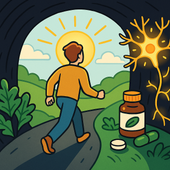
Post-Traumatic Growth and Supplements That Support It
After trauma, true healing means more than survival — it’s transformation. Learn how post-traumatic growth happens in the brain and body, and explore natural supplements like magnesium, ashwagandha, saffron, and omega-3s that support resilience, clarity, and emotional repair.
-
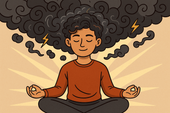
How to Regain Focus After Emotional Stress
After emotional stress, your nervous system feels frayed — your focus fades, thoughts race, and calm seems impossible. Learn how to restore balance, rebuild concentration, and retrain your brain for clarity and peace through evidence-based mind–body tools. 🌿
-
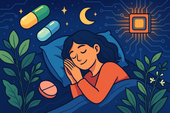
The Future of Sleep Supplements
The future of sleep supplements is here — where science meets nature. Discover how next-generation formulas use adaptogens, amino acids, and biotech innovations to support deep, restorative sleep without dependency. 🌙
-
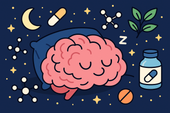
Emerging Research on Sleep and Nootropics
Can nootropics help you sleep better? Discover how compounds like L-theanine, magnesium threonate, ashwagandha, and Alpha-GPC influence neurotransmitters, circadian rhythm, and brain recovery — bridging the gap between smarter days and deeper nights. 🌙
-

New Herbal Extracts for Deep Sleep
Discover the next generation of herbal extracts for deep sleep — from saffron and magnolia to jujube and lemon balm. Learn how these plant-based compounds calm the nervous system, balance cortisol, and promote truly restorative rest. 🌙
-
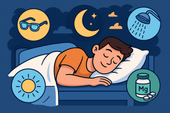
Sleep Biohacking: What Works and What Doesn’t
Biohacking your sleep can sound futuristic — from red light therapy to wearables and supplement stacks. But which hacks actually help, and which are just hype? Discover the science-backed sleep strategies that truly improve rest, recovery, and brain health. 🌙
-
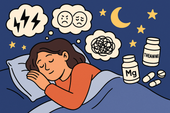
Sleep Support for People with Anxiety Disorders
💭 A restless mind can keep you up all night — thoughts spinning, heart racing, and peace feeling far away. Learn how to quiet overthinking, regulate your nervous system, and create a nightly ritual that teaches your brain to let go and rest deeply. 🌙
-
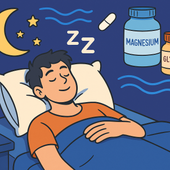
How to Fall Back Asleep After Waking Up
Waking up in the middle of the night? Learn how to fall back asleep quickly and calmly using breathing techniques, stress-reducing rituals, and natural supplements like magnesium and glycine. Restore your body’s rhythm and wake up feeling refreshed.
-
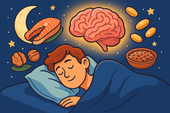
The Role of Omega-3s in Sleep Quality
-
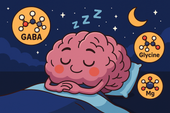
Stacking GABA and Glycine for Deeper Rest
Discover how stacking GABA and glycine can help you achieve deeper, more restorative sleep. Learn how these calming amino acids work together to relax your mind, soothe your body, and improve overall sleep quality—naturally and safely.
-

Overcoming Jet Lag with Supplements
✈️ Jet lag doesn’t have to ruin your trip! Discover how supplements like melatonin, magnesium, L-theanine, and tart cherry can help you reset your body clock faster, reduce fatigue, and recover energy naturally after long flights. 🌙
-
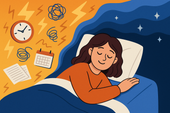
Managing Sleep During Times of Stress
Feeling wired and restless? Learn how to manage sleep during stressful times through nutrition, breathwork, and natural supplements like magnesium and L-theanine. Discover how to calm your nervous system and restore deep, peaceful rest—even when life feels overwhelming.
-

The Role of Magnesium for Night Cramps
Night cramps keeping you awake? Discover how magnesium helps relax muscles, balance electrolytes, and prevent painful spasms. Learn which forms work best, how to take them, and how to pair them with other nutrients for cramp-free, peaceful sleep.
-
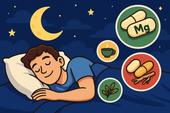
Supplements That Reduce Nighttime Awakenings
🌙 Discover science-backed supplements that help you stay asleep through the night. From magnesium and L-theanine to glycine and ashwagandha, learn how these natural compounds calm your nervous system, balance cortisol, and prevent 2 a.m. wake-ups for deeper, more restorative rest.
-
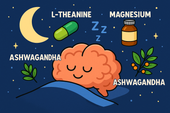
Nootropics That Promote Calm and Rest
Explore the world of calming nootropics — natural brain enhancers that promote relaxation, better focus, and deeper rest. Learn how L-Theanine, magnesium, ashwagandha, and other adaptogens help balance your nervous system, reduce stress, and support restorative sleep.
-
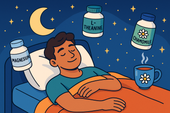
Best Natural Supplement Stack for Sleep
Discover the best natural supplement stack for deep, restorative sleep. Learn how nutrients like magnesium, L-theanine, glycine, and calming herbs such as chamomile and ashwagandha work together to relax your body, calm your mind, and improve sleep quality—naturally and safely.
-
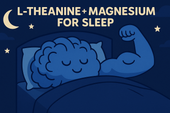
Combining L-Theanine and Magnesium for Sleep: A Calm Night, Naturally
Discover how combining L-Theanine and Magnesium can help you drift into deep, restorative sleep. Learn how this natural duo calms the mind, relaxes the body, and supports your nervous system—without grogginess the next morning.
-
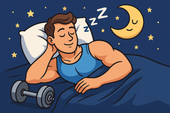
How to Sleep Better After Intense Workouts
Struggling to fall asleep after a tough workout? Learn how to optimize your post-training recovery with nutrition, hydration, and science-backed sleep strategies. Discover how to calm your nervous system, balance hormones, and wake up fully recharged for your next session.
-
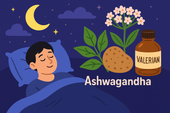
Ashwagandha and Valerian: A Bedtime Combo for Deep Rest and Emotional Reset
Discover the calming synergy of Ashwagandha and Valerian root, two natural sleep aids that help quiet the mind, ease anxiety, and promote deeper rest. Learn how this herbal duo supports the nervous system, balances stress hormones, and restores emotional peace — without next-day grogginess.
-
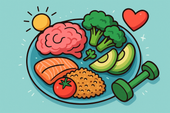
How to Create a Resilience-Boosting Diet
Discover how to build emotional and physical strength from the inside out with a resilience-boosting diet 🍎. Learn which foods stabilize your mood, how supplements like magnesium and omega-3s strengthen your stress response, and why pairing nutrition with breathwork and therapy creates lasting calm, focus, and vitality 🌿💪.
-

Best Teas and Herbal Blends for Calmness: Nature’s Way to Restore Inner Peace
Ashwagandha, the ancient adaptogenic herb, helps your body find balance during stress. Known as “Indian ginseng,” it supports cortisol regulation, boosts energy, and restores calm clarity. Discover how this powerful root promotes resilience, emotional balance, and steady vitality — one cup at a time. 🌸
-

Parenting and Emotional Strength: How to Raise Children Without Losing Yourself
Empathy is the bridge that connects hearts — the quiet power to understand, feel, and support another’s emotions without judgment. Learn how empathy strengthens relationships, enhances communication, and cultivates deeper compassion in everyday life. 🌿
-
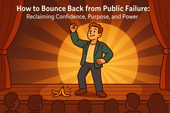
How to Bounce Back from Public Failure: Reclaiming Confidence, Purpose, and Power
Visualization is more than imagination — it’s brain training for resilience. By picturing calm, success, or healing, you activate the same neural pathways as real experience. Learn how daily visualization rewires your brain for confidence, emotional balance, and recovery from stress. ✨
-

Coping with Financial Stress Through Resilience: How to Stay Grounded When Money Feels Tight
Body awareness is the foundation of emotional resilience. By tuning into your body’s signals — tension, fatigue, or calm — you learn to recognize stress before it overwhelms you. Discover how mindfulness, gentle movement, and breathwork can deepen your connection with your body and restore balance from the inside out. 🧘
-

How to Stay Positive During Chronic Illness: A Guide to Emotional Strength and Hope
Creativity is more than art — it’s a form of healing. Whether through painting, writing, music, or small acts of expression, creativity helps release emotion, calm the nervous system, and reconnect you to joy. Discover how to use creativity as a tool for emotional balance, resilience, and self-discovery. 🌿
-
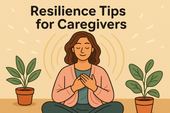
Resilience Tips for Caregivers: How to Stay Strong While Caring for Others
Joy isn’t the absence of pain — it’s the quiet strength to find light even in challenging times. Cultivating joy through small daily moments restores balance, releases stress, and reminds you of life’s beauty. Learn how to reconnect with authentic happiness, rebuild emotional energy, and nurture your nervous system through gratitude, presence, and play. 🌿
-

Building Resilience After a Breakup: How to Heal, Rebuild, and Rise Stronger
Social connection is one of the strongest predictors of emotional resilience. During difficult times, genuine relationships act as anchors — calming the nervous system, reducing stress hormones, and helping you regain perspective. Learn how cultivating real human connection can strengthen your mind, heart, and overall well-being. 🌿
-

How to Stay Emotionally Strong During Job Loss
Your emotions are powered by brain chemistry — a delicate balance of neurotransmitters like serotonin, dopamine, and cortisol. When these chemicals work in harmony, you feel calm, focused, and resilient. Learn how daily habits, nutrition, and mindfulness can support your brain chemistry and boost emotional well-being naturally. 🌿
-
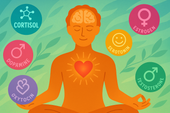
The Role of Hormones in Emotional Stability: How Your Chemistry Shapes Your Calm
Hormones shape more than your body — they shape your emotions, resilience, and sense of calm. From cortisol to serotonin, these chemical messengers influence how you react to stress, connect with others, and recover from challenges. Learn how to balance your hormones naturally to build lasting emotional stability and harmony within. 💫
-
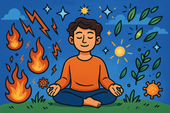
Mitochondria and Emotional Energy: The Cellular Power Behind Your Mood
Breathwork is one of the most powerful tools for emotional regulation and cellular balance. Through intentional breathing, you can calm your nervous system, increase oxygen flow to the brain, and even support mitochondrial energy. Learn how conscious breathing connects body and mind — transforming stress into presence and emotional strength. 🌿
-
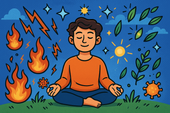
Inflammation and Its Impact on Mood Resilience: The Silent Link Between Body and Mind
Inflammation doesn’t just affect the body — it impacts the mind. Chronic inflammation alters brain chemistry, depletes serotonin, and makes emotional recovery harder. Learn how calming inflammation through nutrition, mindfulness, and sleep can restore balance, resilience, and a renewed sense of emotional strength. 💫
-
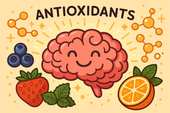
How Antioxidants Protect Emotional Well-being: The Hidden Link Between Oxidative Stress and Mental Health
Antioxidants do more than protect your body — they defend your mind. By neutralizing oxidative stress, antioxidants support serotonin, dopamine, and brain energy pathways that keep you calm, focused, and emotionally balanced. Discover how foods like berries, green tea, and dark chocolate nourish your brain, boost mood, and strengthen resilience from the inside out. 🌿✨
-
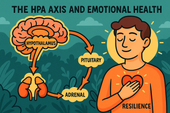
The HPA Axis and Emotional Health: The Hidden Bridge Between Stress and Mind
Neuroplasticity — the brain’s ability to rewire and adapt — is the foundation of emotional healing and resilience. When you face stress, trauma, or change, your neural pathways can reshape themselves to support new patterns of calm, focus, and self-awareness. Learn how daily practices like mindfulness, therapy, and breathwork strengthen neuroplasticity to transform emotional pain into personal growth. 🌸
-
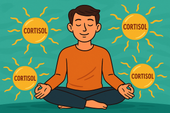
Why Cortisol Control Is Key to Resilience: Mastering Stress to Build Emotional Strength
Controlling cortisol — the body’s main stress hormone — is the secret to lasting resilience. When cortisol levels stay balanced, your mind becomes clearer, emotions steadier, and energy more sustainable. Learn how breathwork, mindset shifts, adaptogens, and daily rhythms can help you calm your stress response and build true inner strength. 🌞💪
-
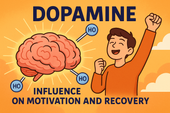
Dopamine’s Influence on Motivation and Recovery: Reigniting Drive and Balance
Healthy relationships are the foundation of emotional balance and resilience. Whether romantic, familial, or platonic, genuine connection releases dopamine, serotonin, and oxytocin — the brain’s “bonding trio” — helping us feel secure, motivated, and seen. Learn how trust, empathy, and communication not only strengthen your connections but also reshape your nervous system for deeper emotional well-being. 🌿🤝
-
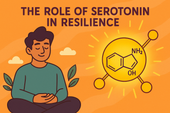
The Role of Serotonin in Resilience: How This “Mood Molecule” Shapes Emotional Strength
Serotonin — often called the “resilience molecule” — plays a vital role in how we handle stress, regulate mood, and recover from emotional challenges. Beyond happiness, this powerful neurotransmitter helps balance the gut-brain axis, stabilize the nervous system, and support emotional flexibility. Learn how nutrition, sunlight, mindfulness, and adaptogens can naturally boost serotonin and strengthen your emotional resilience. 🌞🧠
-
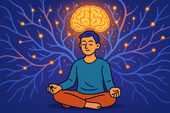
How Neuroplasticity Supports Emotional Growth: Rewiring the Brain for Resilience
Neuroplasticity is the brain’s built-in power to grow, adapt, and heal — and it’s the foundation of emotional transformation. Every mindful breath, compassionate act, or reframed thought strengthens new neural pathways that support resilience and self-awareness. Learn how your brain rewires through daily habits, helping you turn emotional challenges into opportunities for growth and calm. 🌿
-

Tai Chi and Adaptogens for Mind-Body Balance: The Art of Harmonizing Energy and Resilience
Alchemy isn’t just an ancient science — it’s a timeless symbol of transformation and inner balance. By blending the physical and spiritual, alchemy teaches us that change begins from within. Just as metals are refined into gold, we too can transmute emotional pain, stress, and chaos into clarity and strength through mindful practice and self-awareness. 🌙✨
-
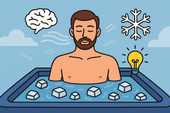
Cold Therapy and Emotional Control: Training the Mind Through the Body
Cold therapy isn’t just for athletes — it’s a tool for emotional mastery. By exposing your body to controlled cold, you train your nervous system to stay calm under stress, improving focus, mood, and resilience. This article explores the science of cold exposure, its impact on hormones and the vagus nerve, and how ice baths and cold showers can help you build emotional control, one breath at a time. 🧊🧘♂️
-
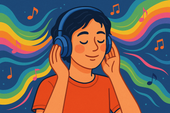
How Music Influences Emotional Recovery: The Healing Soundtrack of the Mind
Neuroplasticity — the brain’s ability to rewire and heal itself — is at the heart of emotional recovery. Through mindful habits, music, therapy, and consistent mental stimulation, your brain can form new connections that support resilience and well-being. Discover how neuroplasticity turns pain into growth, helping you rebuild balance, focus, and emotional strength. 🌿
-
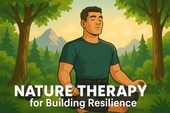
Nature Therapy for Building Resilience: Reconnecting With the Healing Power of the Earth
Nature therapy helps rebuild emotional resilience by reconnecting you with the healing rhythms of the Earth. From forest walks to sunlight exposure, nature restores balance to your nervous system, lowers stress hormones, and teaches emotional adaptability. Learn how spending time outdoors can enhance mental clarity, calm anxiety, and awaken your natural capacity to heal. 🌞
-
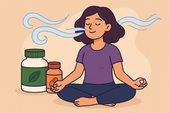
Breathwork Techniques That Pair with Supplements: The Ultimate Synergy for Stress Relief and Mental Clarity
Breathwork and supplements create a powerful mind-body synergy for stress relief, focus, and energy. By combining intentional breathing with adaptogens, nootropics, and calming nutrients, you can naturally regulate cortisol, sharpen mental clarity, and boost emotional balance. This guide explores the best breathwork techniques and supplement pairings to help you feel centered, calm, and energized from the inside out. 🌿

















































